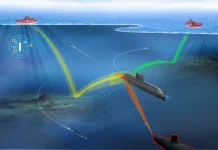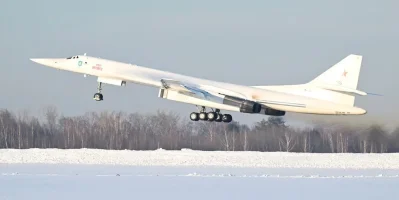- Views: 1K
- Replies: 8
Amidst the advanced aerospace exhibitions at the Dubai Airshow 2025, Russia’s state-owned defence giant, Rostec, has made a significant strategic move in the international arms market.
In a surprising proposal directed at New Delhi, Russian officials have offered to jointly develop a twin-seater version of the Fifth Generation Fighter Aircraft (FGFA), based on the advanced Su-57 platform.
This ambitious pitch expands upon Moscow’s existing offer of the export-oriented Su-57E and signals a vigorous effort to revitalise the collaborative Indo-Russian FGFA project, which was effectively shelved in 2018.
The proposal was delivered during the airshow, where the Su-57E performed an impressive flight demonstration, marking its debut in the Middle East. This development serves as a clear indicator of Russia's intent to strengthen its defence partnership with India.
The timing is particularly critical, coming just weeks before Russian President Vladimir Putin is scheduled to visit India in December 2025. The offer arrives as India continues to seek advanced stealth capabilities to update its ageing air force, navigating a competitive procurement process that features major global contenders such as the French Rafale and the American F-35.
Originally initiated in 2007, the FGFA programme was designed as a collaborative venture between India’s Hindustan Aeronautics Limited (HAL) and Russia’s United Aircraft Corporation (UAC). The goal was to produce a stealth fighter that met the specific requirements of both nations.
Despite an initial combined investment of $295 million for preliminary designs—which promised improvements in stealth, sensors, and avionics—New Delhi withdrew from the project seven years ago.
At the time, Indian officials cited unresolved issues regarding the aircraft's radar cross-section, the reliability of its engines, and dissatisfaction with the level of technology transfer.
Rostec’s new proposal appears designed to directly address these past grievances. Sergey Chemezov, the CEO of Rostec, told reporters that the new offer is "unrestricted," promising a comprehensive transfer of critical technologies.
This includes proprietary knowledge for manufacturing, avionics, and engines, with assurances that the deal would remain insulated from geopolitical sanctions.
Open-source intelligence suggests the package may arguably include the new "Izdelie 177S" engine, a fifth-generation powerplant designed to address previous performance concerns.
The specific pitch for a twin-seater variant aligns closely with the Indian Air Force’s (IAF) operational preferences.
A dual-cockpit jet offers greater versatility than the standard single-seat Su-57, enabling complex missions such as electronic warfare, loyal wingman command (manned-unmanned teaming), and advanced pilot training. This configuration fits the criteria for the IAF’s Multi-Role Fighter Aircraft (MRFA) tender, which seeks to acquire 114 modern jets.
UAC Director General Vadim Badekha reinforced this alignment, stating that Russia accepts all technical demands from the Indian side and is maintaining constant communication to ensure indigenous Indian systems can be integrated seamlessly.
Beyond verbal assurances, there are tangible plans for industrial cooperation. Russian assessments indicate that HAL is already capable of handling up to 50% of the Su-57’s production locally.
The proposed manufacturing roadmap utilises existing Indian infrastructure: assembly lines in Nashik, engine facilities in Koraput, and avionics divisions in Kasaragod.
During the earlier Aero India 2025 exhibition, officials from Rosoboronexport suggested that licensed production could commence rapidly, potentially involving a contract worth approximately $30 billion for a fleet of 63 to 114 aircraft, granting India full export rights.



